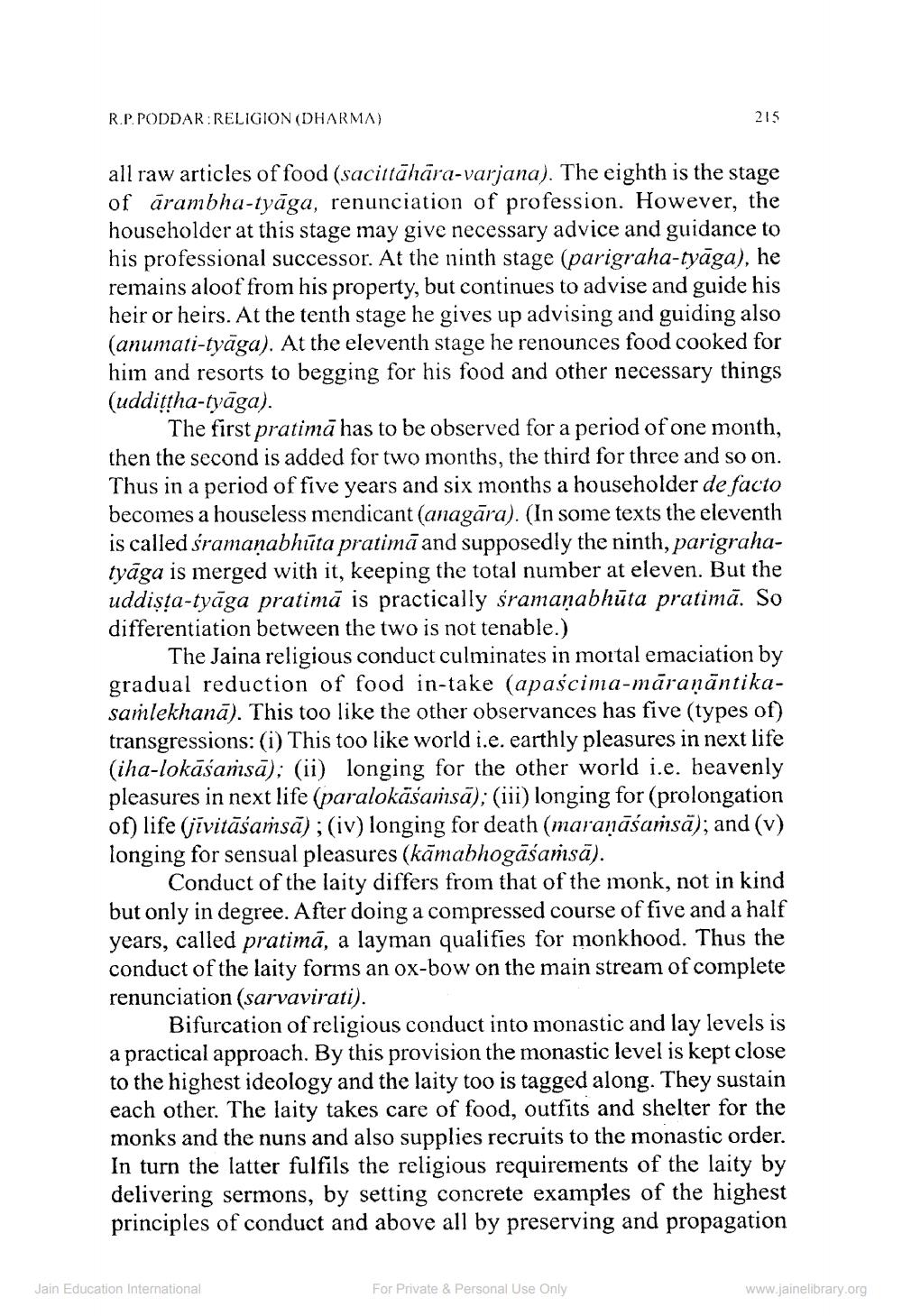________________
R.P. PODDAR: RELIGION (DHARMA)
all raw articles of food (sacittähära-varjana). The eighth is the stage of arambha-tyāga, renunciation of profession. However, the householder at this stage may give necessary advice and guidance to his professional successor. At the ninth stage (parigraha-tyāga), he remains aloof from his property, but continues to advise and guide his heir or heirs. At the tenth stage he gives up advising and guiding also (anumati-tyāga). At the eleventh stage he renounces food cooked for him and resorts to begging for his food and other necessary things (uddiṭṭha-tyāga).
The first pratima has to be observed for a period of one month, then the second is added for two months, the third for three and so on. Thus in a period of five years and six months a householder de facto becomes a houseless mendicant (anagara). (In some texts the eleventh is called śramaṇabhūta pratimā and supposedly the ninth, parigrahatyaga is merged with it, keeping the total number at eleven. But the uddiṣṭa-tyaga pratima is practically śramanabhūta pratima. So differentiation between the two is not tenable.)
The Jaina religious conduct culminates in mortal emaciation by gradual reduction of food in-take (apaścima-māraṇāntikasamlekhanā). This too like the other observances has five (types of) transgressions: (i) This too like world i.e. earthly pleasures in next life (iha-lokāśamsa); (ii) longing for the other world i.e. heavenly pleasures in next life (paralokäsaṁsā); (iii) longing for (prolongation of) life (jivitāśamsa); (iv) longing for death (maraṇāśamsa); and (v) longing for sensual pleasures (kāmabhogāśaṁsā).
Conduct of the laity differs from that of the monk, not in kind but only in degree. After doing a compressed course of five and a half years, called pratima, a layman qualifies for monkhood. Thus the conduct of the laity forms an ox-bow on the main stream of complete renunciation (sarvavirati).
Bifurcation of religious conduct into monastic and lay levels is a practical approach. By this provision the monastic level is kept close to the highest ideology and the laity too is tagged along. They sustain each other. The laity takes care of food, outfits and shelter for the monks and the nuns and also supplies recruits to the monastic order. In turn the latter fulfils the religious requirements of the laity by delivering sermons, by setting concrete examples of the highest principles of conduct and above all by preserving and propagation
Jain Education International
215
For Private & Personal Use Only
www.jainelibrary.org




